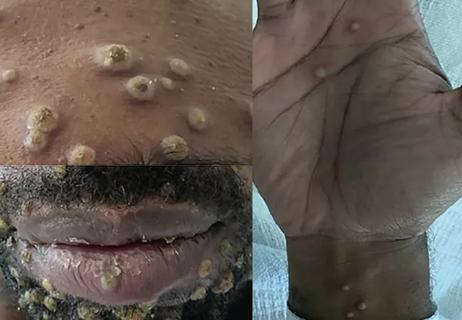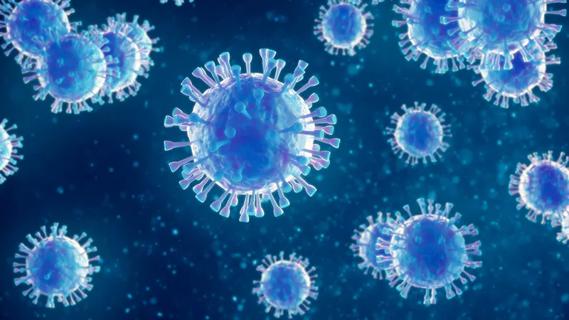Chemicals in e-cigarettes weaken the epithelial barrier in airways

Electronic cigarettes entered the U.S. market in 2007, with manufacturers touting their safety. Recent research led by Cleveland Clinic pediatric pulmonologist Fariba Rezaee, MD, raises doubts about those claims.
Advertisement
Cleveland Clinic is a non-profit academic medical center. Advertising on our site helps support our mission. We do not endorse non-Cleveland Clinic products or services. Policy
E-cigarettes are battery-operated devices that incorporate aerosolized liquid mixtures of propylene glycol, vegetable glycerin, flavorings and/or nicotine. The American Lung Association reports that even e-cigarettes labeled “nicotine free” contain trace amounts of nicotine along with other toxic substances.
In 2020, a U.S. Centers for Disease Control and Prevention survey found that more than 3.5 million youth were using e-cigarettes (vaping). That same year, Dr. Rezaee and her colleagues at Cleveland Clinic Children’s published an alarming case series of seven adolescents admitted to the intensive care unit with complications of vaping.
“Vaping is advertised as being safer than cigarettes — able to help adults quit smoking,” says Dr. Rezaee, a staff physician in the Center for Pulmonary Medicine at Cleveland Clinic Children’s. “But how can something that contains even more concentrated nicotine help you quit? Yet, I’ve spoken with doctors who believe it’s safe. I really want to put the word out that vaping is dangerous for everyone, especially youth.”
In a new series of experiments using an in vitro model and a custom-built airtight chamber that simulates a teen’s breathing patterns while vaping, Dr. Rezaee and her team show that nicotine exposure from e-cigarettes disrupts the tight junctions between human airway epithelial cells that normally help protect lungs from viruses and other pathogens. This damage occurs even at exposures that do not induce cytotoxicity.
“We found that exposure to e-cigarette chemicals induces a decrease in the integrity of the airway epithelial barrier and disassembly of the apical junctional complexes that are crucial to regulating the formation and maintenance of the epithelial barrier,” says Dr. Rezaee.
Advertisement
Aerosolized flavorings in e-cigarettes, such as the cinnamon and menthol examined in the study, added to this barrier dysfunction.
Beyond a weakened epithelial barrier, researchers showed that exposure of human bronchial cells to aerosolized nicotine in e-cigarettes followed by exposure to respiratory syncytial virus (RSV) causes a twofold increase in RSV infection compared with pre-exposure to filtered air. Vaping amplifies the barrier dysfunction induced by RSV.
“The effects of vaping and virus are additive,” says Dr. Rezaee. “Vaping, even in the amount that doesn’t cause overt toxicity, still damages the airway and makes the airway more vulnerable to viral infection.”
This phenomenon isn’t unique to RSV. It also has been seen with SARS-CoV-2, among other pathogens. However, RSV is a common winter virus and a leading cause of lower respiratory infection-related hospitalization in children and high-risk adults. Previously, Dr. Rezaee’s team showed in mice that RSV induces a “leaky airway” by disrupting epithelial apical junctional complex function.
“If someone is vaping and then gets RSV, they get it hard,” she notes. “Furthermore, if their airway barrier is disrupted, they also can get bacterial pneumonia. I would anticipate that any viral or bacterial infection on top of vaping is going to cause more damage.”
The next step will be to study the viral aspect of this phenomenon in mice, with the aim of finding biomarkers signaling disrupted airway junctions. That could lead to human studies comparing people who vape with those who don’t, using airway brushing.
Advertisement
For now, Dr. Rezaee urges clinicians — especially those in pediatrics — to strongly discourage patients from vaping. In addition to the myth that vaping is safe, she has heard some clinicians say they thought vaping had been banned.
“It’s not banned. It’s still very much on the market,” she says. “I really want to warn people about the dangers of vaping.”
Advertisement
Advertisement

Not if they meet at least one criterion for presumptive evidence of immunity

Findings challenge the current diagnostic criteria for congenital Zika syndrome, expanding the definition beyond skull or brain abnormalities

Persistent rectal pain leads to diffuse pustules

Use of MRI adds to cost but remains cost-effective due to higher sensitivity

Anti-viral immunity identified a novel mechanism in necroptosis

Pediatricians and adolescent medicine specialists must play a role in curbing teen ENDS usage

Pearls to reduce the strain of RSV, COVID-19 and influenza infections

Despite benefits, vaccination rates remain low for high-risk population